Connectors UI
Connectors UI
The Connectors UI in SearchBlox allows you to index content from applications not directly supported by standard collections. It provides a user-friendly way to connect to these external sources, configure indexing, and bring their data into SearchBlox for searching. This extends SearchBlox's reach to a wider range of data.
Locate Connectors UI in SearchBlox:
The Connectors UI files are located in the connectors folder within your SearchBlox instance directory.

Run Connectors UI as a service in Windows
- Navigate to Connectors Directory
C:\\SearchBloxServer\\connectors - Install the Service
Execute:sbconnector-service.exe install - In the Task Manager service tab start the sbconnector service
Run Connectors UI as a service in Linux
- Download Service File: Obtain sbconnector.service and place it in the systemd directory:
cd /lib/systemd/system wget https://d2fco3ozzrfhhd.cloudfront.net/v10.0/sbconnector.service - Set Permissions: Assign ownership and execute permissions:
chown searchblox:searchblox sbconnector.service chmod 755 sbconnector.service - Start Service: Initiate the connector service:
systemctl start sbconnector.service - Stop Service: Halt the connector service:
systemctl stop sbconnector.service - Check Status: View the current status of the service:
systemctl status sbconnector.service
Please find the following list of data sources, on clicking the link you would be redirected to the help page
Alfresco Data Source
Amazon S3 Data Source
Azure Blob Data Source
Azure File Data Source
Box Data Source
CSV Data Source
Confluence Data Source
Drupal Data Source
DocuSign Data Source
Generic Entity Updater Data Source
GitHub Data Source
Google Drive Data Source
Google Sites Data Source
JIRA Data Source
One Drive Data Source
Salesforce Data Source
SharePoint 2010 Data Source
Sharepoint 2013 Data Source
SharePoint Online Data Source
URL Data Source
Zendesk Data Source
Starting and Accessing Connectors UI (Windows)
- Start Service: Open Task Manager, navigate to the "Services" tab, and start the "sbconnector" service.
- Access UI: Open a web browser and navigate to https://localhost:8446. The Connectors UI runs on port 8446 by default.
- Port Configuration: To change the default port, edit the config.xml and sbconnector-service.xml files located in the Searchblox/connectors/ directory.
Create an account
- Click on the “Create an account” button on the home page.
- Enter a new username and password
- And click on “Create an account now”.
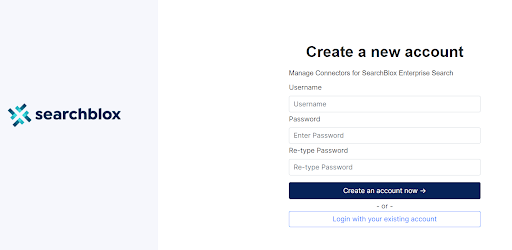
Create an endpoint
- After creating an account, click on the "+" icon on the top right to create a new endpoint.
NOTE:
Please create a folder
usersin<SearchBlox-Installation-path>\connectorsbefore creating a endpoint.

- Provide the following details to create an endpoint:
- Endpoint name should be unique for each endpoint created.
- URL, the SearchBlox endpoint (https://localhost:8443/). "localhost" can be replaced with the IP address where SearchBlox is installed.
- API key of the above SearchBlox instance
- SearchBlox Private-Key can be found on the SearchBlox user tab for SBAdmin or Admin Users.
- Make sure the SearchBlox server is up and running before creating an endpoint. Otherwise, it will throw an error.

Create a new Data Source
- Click on “Setup a new Data Source” to create a new data source using a connector of your choice.

- Select the type of Data Source with which you want to index the documents from the UI.
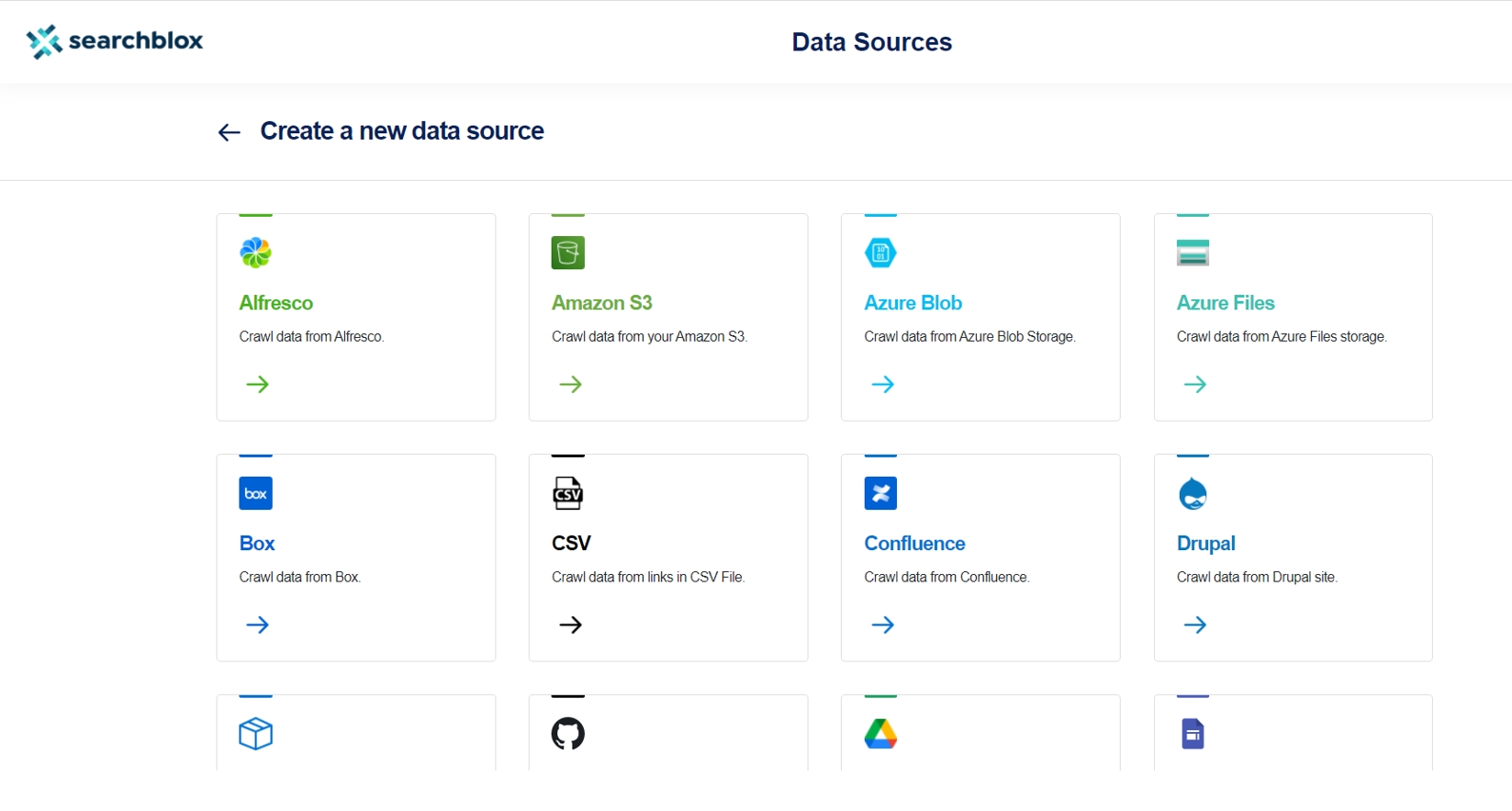
- Provide all mandatory fields and click on Create & Index.
- Make sure you have a corresponding Custom Collection in the SearchBlox server to index the documents.
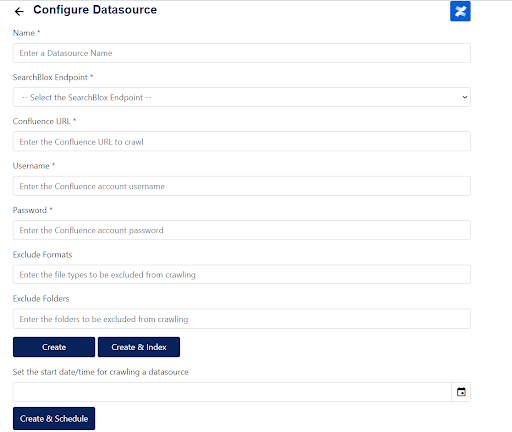
- State will be RUNNING while the connector is indexing the documents.
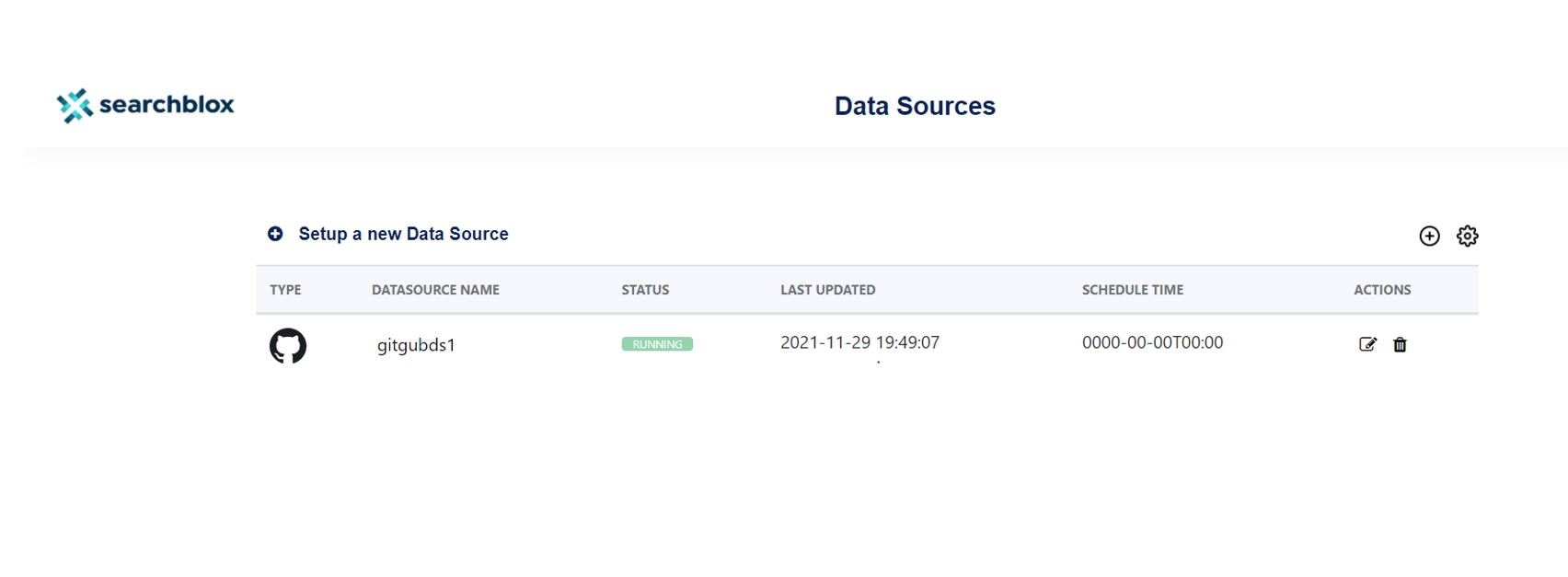
- Once the state changes to DONE, navigate to SearchBlox server and confirm if the documents are indexed in that particular Custom Collection.
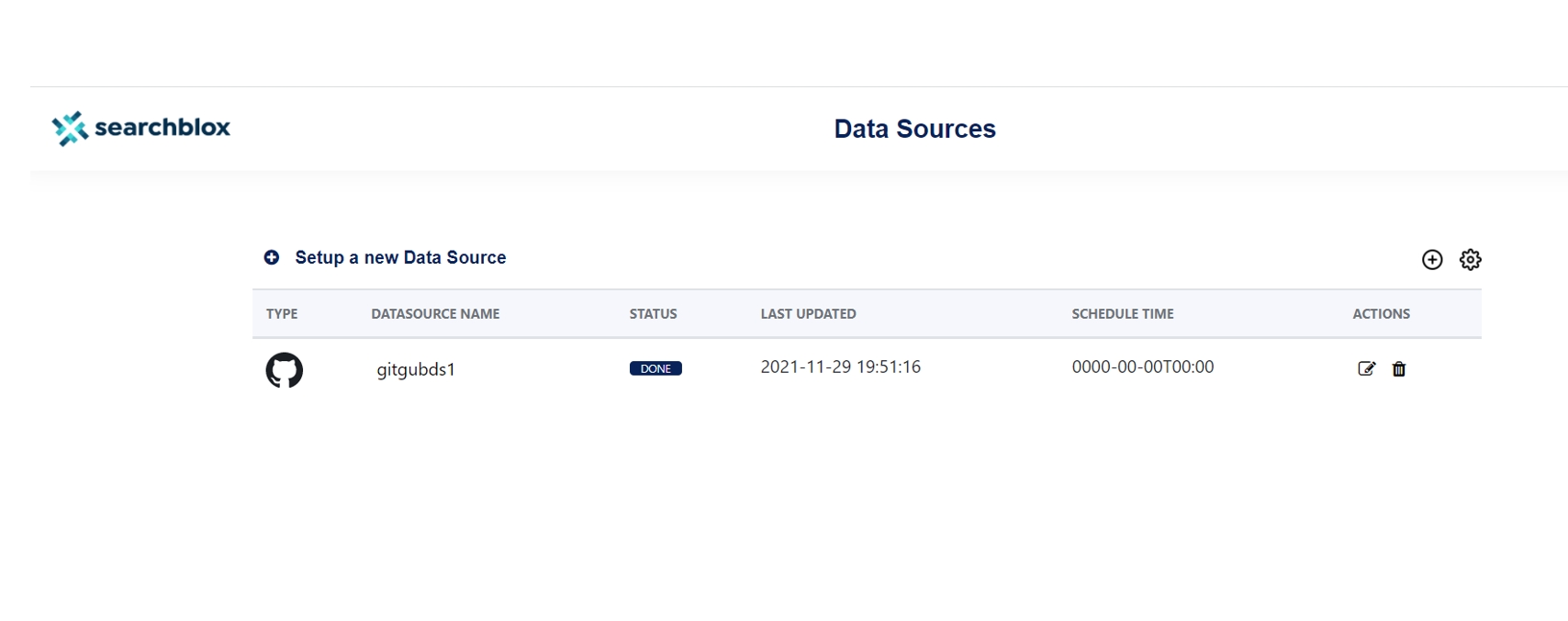
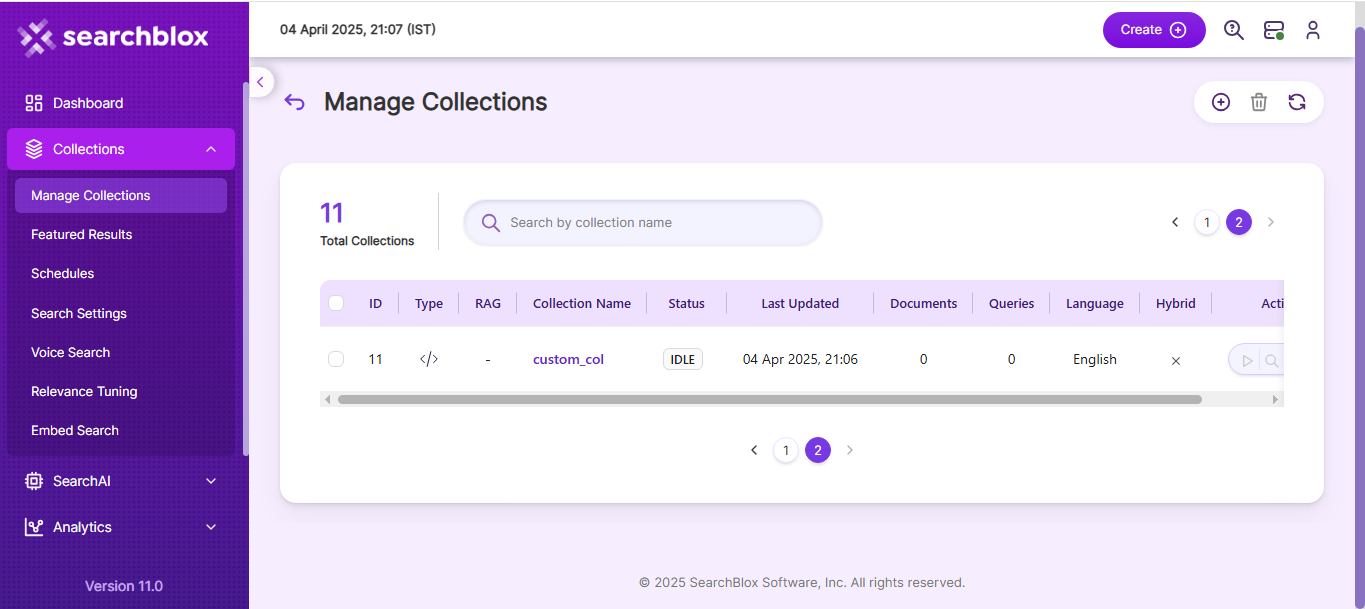
Updated 9 months ago
